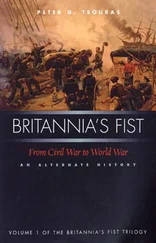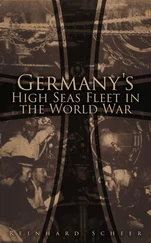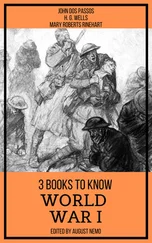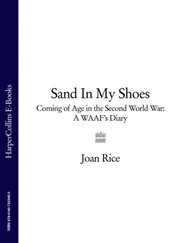18. In late September 1916, Lieutenant Colonel Hugh Elles, DSO, was appointed to command the tanks in France. He was a natural choice and a good one. A fellow tank officer described him as ‘precociously successful and admirably good looking, reasonably vain of his appearance, but quite modest as to his attainments. He is immensely popular not only in the Tank Corps but in the Army generally. He struck me as one of the paladins of the war, modernised and adjusted to the conditions of the hour. Decisions do not come to him easily, and he is sensitive to influences, taking a good deal of time to make up his mind, but with a great deal of personal charm and power of leadership. He makes no profession of indifference to danger, but probably no-one in the army would lead a forlorn hope as cheerfully.’
19. Williams-Ellis, The Tank Corps , p. 179.
20. Bean, Official History , vol. VI, p. 267, quoting Monash.
21. Ibid., p 268, quoting Monash.
22. Ibid., p. 283.
23. Ibid., pp. 293–294.
24. Lieutenant Colonel the Hon. John Dennis Yelverton Bingham commanded 8 Battalion Tank Corps in this battle, and was awarded the DSO for his actions. The citation reads in part: ‘He was responsible for the successful assembly of tanks on the night of 3 July, and by his personal supervision largely contributed to the successful launching of the tanks in their attack. Prior to 4 July, under all conditions of hostile shelling, and almost daily, this officer personally reconnoitred the ground over which the tanks under his command were to operate.’ In addition to Lieutenant Colonel Bingham’s DSO, the Tank Corps Battalions and supporting 1 Tank Field Company were awarded eleven Military Crosses, two Distinguished Conduct Medals, and eighteen Military Medals.
25. Fletcher, British Tanks 1915-1919 , pp. 124–125. Carrier tanks were also called supply tanks, tank tenders, or baggage tanks. Early supply tanks had been cobbled together from redundant Mark Is and IIs, and were issued to tank battalions. In February 1918 independent tank supply companies were established using converted Mark IVs. Each Mark IV had its original sponsons removed and replaced by larger ones, and mesh frames were fitted inside to prevent stores falling against the engine.
26. Williams-Ellis, The Tank Corps , p. 182.
27. Ibid., p. 183.
28. Ibid., p. 185.
29. Bean, Official History , vol. VI, p. 328.
30. This letter was provided by Sydney’s great-grandson, Matthew Huntingdon, and his permission to use it is gratefully acknowledged and appreciated.
31. Ivan Chapman, Iven G Mackay, Citizen and Soldier , Melway Publishing, Melbourne, 1975, pp. 109–110.
1. The plans for the Battle of Amiens, 8 August 1918, included ten heavy and two light (Whippet) battalions. This was approximately the proportion of heavies to Whippets for the last hundred days of the war. See Harris, Men, ideas, and tanks, p. 176.
2. On 18 May 1918, a War Office paper entitled ‘Proposals for the use of tanks in 1919’ was sent to Haig. Haig commented on this in June, identifying its main points as: (i) the Germans can only be defeated on the Western Front; (ii) to defeat the Germans a definite breakthrough on a broad front is necessary; (iii) a successful breakthrough on a broad front can only be made using large numbers of tanks. He accepted these points, but emphasised that tanks should be part of an all-arms force, and that, although tanks were a necessity, he was not willing to sacrifice everything else to their production. Haig’s notes are in PRO WO158/830.
3. TCOIV/5, Fuller papers, Liddell Hart Centre for Military Archives, Kings College London (LHCMA).
4. RUSI Journal, vol. 65, February to November 1920, p. 74.
5. Harris, Men, ideas, and tanks, p. 197.
6. Ibid., p. 68, pp. 106–7, p. 166. Harris is concerned throughout his book to counter the view held by tank enthusiasts such as Fuller that the High Command was one of the major barriers to the effective use of tanks.
7. John Coates, ‘Preparing armoured units for overseas service’ in The Australian Army and the Vietnam War 1962-1972 , Peter Dennis and Jeffrey Grey (eds), Army History Unit, Canberra, 2002, p. 74.
8. Quoted in R.N.L. Hopkins, Australian Armour , Australian War Memorial, Canberra, 1978, pp. 13–14.
9. Military Board agendum 129, 11 August 1926.
10. The Tank Corps training centre was moved from Bisley to Bovington in mid-1916. It is near Wareham in the county of Dorset and has a large tract of heathland to the north of the camp which is good for training tank recruits to drive. Nearby is the gunnery range at Lulworth, where tank gunners can practise firing main and secondary armaments out to sea. Bovington and Lulworth remain the Headquarters of the Tank Corps, now the Royal Tank Regiment, to this day.
11. Hopkins, Australian Armour , p. 15. The tanks were Vickers Medium Tanks Mark II, and they cost £72,000 in total.
12. Commonwealth of Australia Gazette 131/1927.
13. Paul Handel, Dust, Sand and Jungle, Australian Military History Publications, Sydney, 2003, p. 10.
14. The total number of tanks on the strength of the two Light Companies combined was ten Vickers lights Mark VI A. One of the Armoured Car Regiments had three cars, and the other four. The 1st Tank Section had four Vickers mediums Mark II (Ibid., pp. 5 and 14).
15. Hopkins, Australian Armour, p. 26.
16. Stanley Melbourne Bruce had fought with gallantry and distinction in World War I. He entered Parliament in 1918 and quickly rose to be Prime Minister from 1923 to 1929. He was High Commissioner in London from 1932 to 1945. He was created Viscount Bruce of Melbourne in 1947.
17. R.G. Neale, Documents on Australian Foreign Policy (from here on DAFP), vol. II, Document 308, cablegram, Bruce to Menzies, 26 October 1939.
18. DAFP vol. II, Document 134, cablegram Menzies to Chamberlain.
19. DAFP vol. III, Document 16, letter Bruce to Menzies, 2 January 1940.
20. DAFP vol. III, Document 71, letter Menzies to Bruce, 22 February 1940.
21. Gavin Long, The Six Years War , Australian War Memorial, Canberra, p. 10.
22. Ibid., p. 8.
23. David Horner, High Command , Australian War Memorial, Canberra, 1982, p. xix.
24. Long, The Six Years War , p. 29. Churchill’s own account of his rise to the leadership is contained in the final chapter of vol. I of his History of The Second World War (Cassell, London, 1949). On page 24 of vol. II he records his speech to the House of Commons on 13 May 1940: ‘You ask, what is our policy? I will say: it is to wage war, by sea, land, and air, with all our might and with all the strength that God can give us: to wage war against a monstrous tyranny, never surpassed in the dark, lamentable catalogue of human crime. That is our policy.’
25. Long, The Six Years War, p. 28.
26. Horner, High Command , p. 19. The first meeting of the War Cabinet was held on 27 September 1939. Minutes of the War Cabinet meetings are held in the National Archives of Australia in the Shedden papers, A5954 803/1 to 811/2. The only minute recorded for the first meeting was: ‘Procedure – Attendance of Chiefs of Staff. It was decided that the Chiefs of Staff would not be present continuously at War Cabinet meetings, but should attend only on those occasions when their advice is required on any matter that is under consideration.’
27. Hopkins, Australian Armour, p. 29.
28. In 1938, Prime Minister Joseph Lyons had asked that a senior British Army officer should come to Australia to report on the state of the Australian Army. Lieutenant General E.K. Squires was the officer sent. Soon after the outbreak of war he was appointed Chief of the General Staff.
Читать дальше












